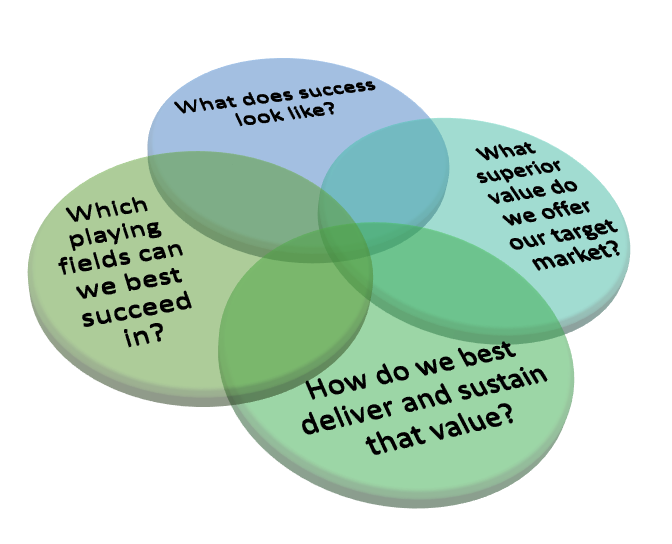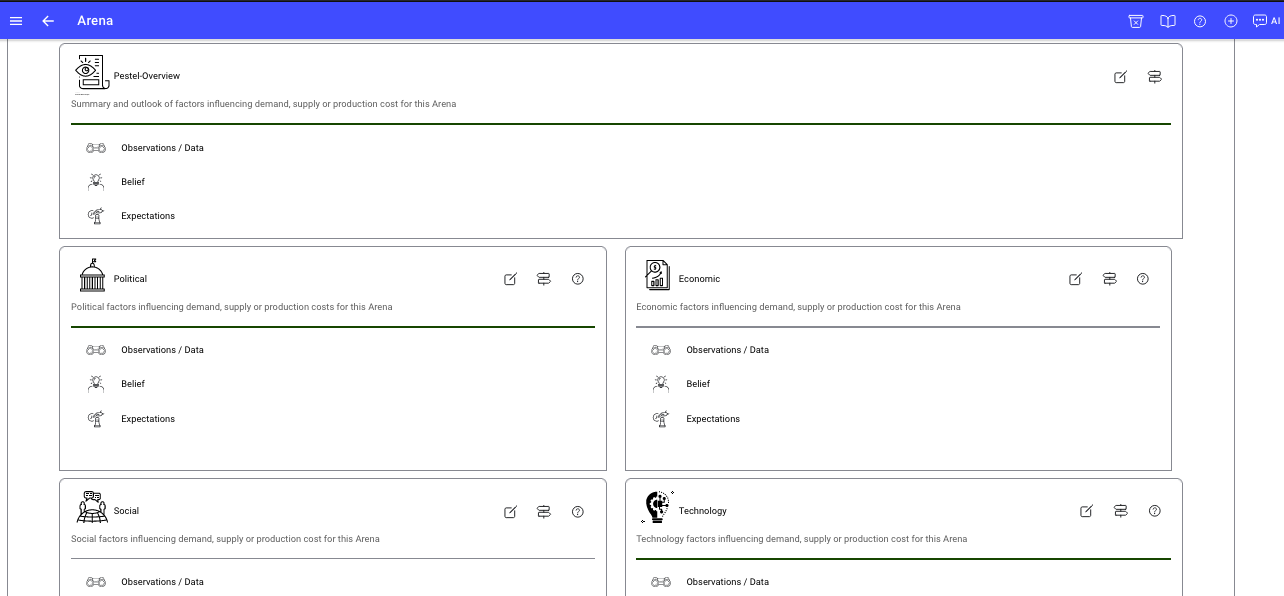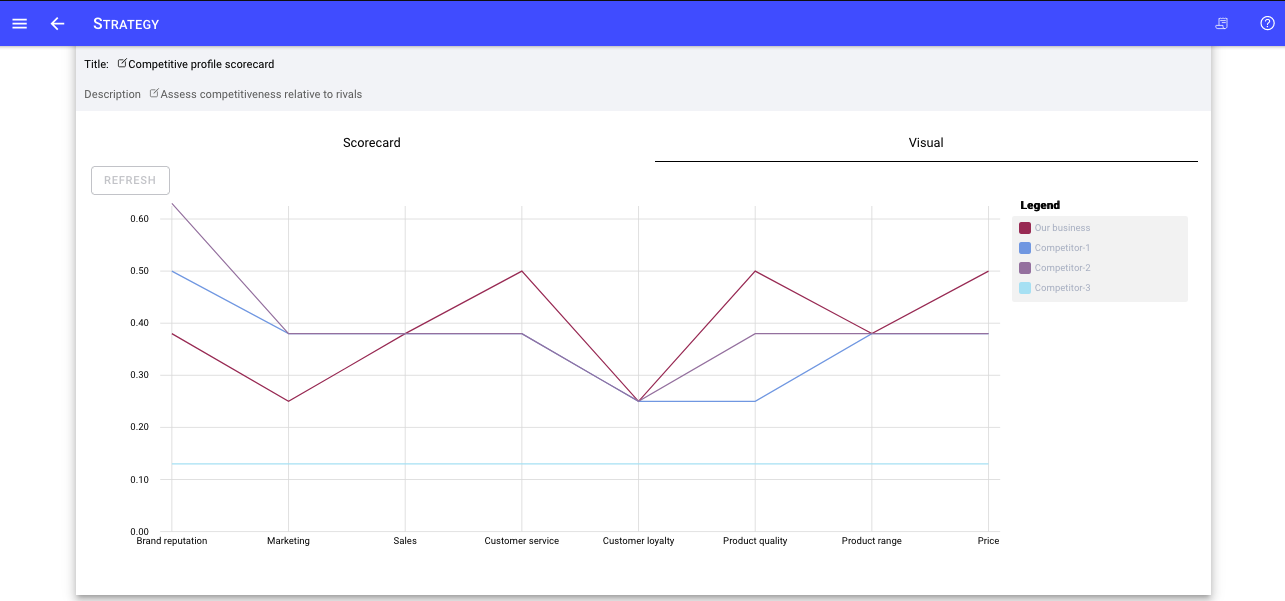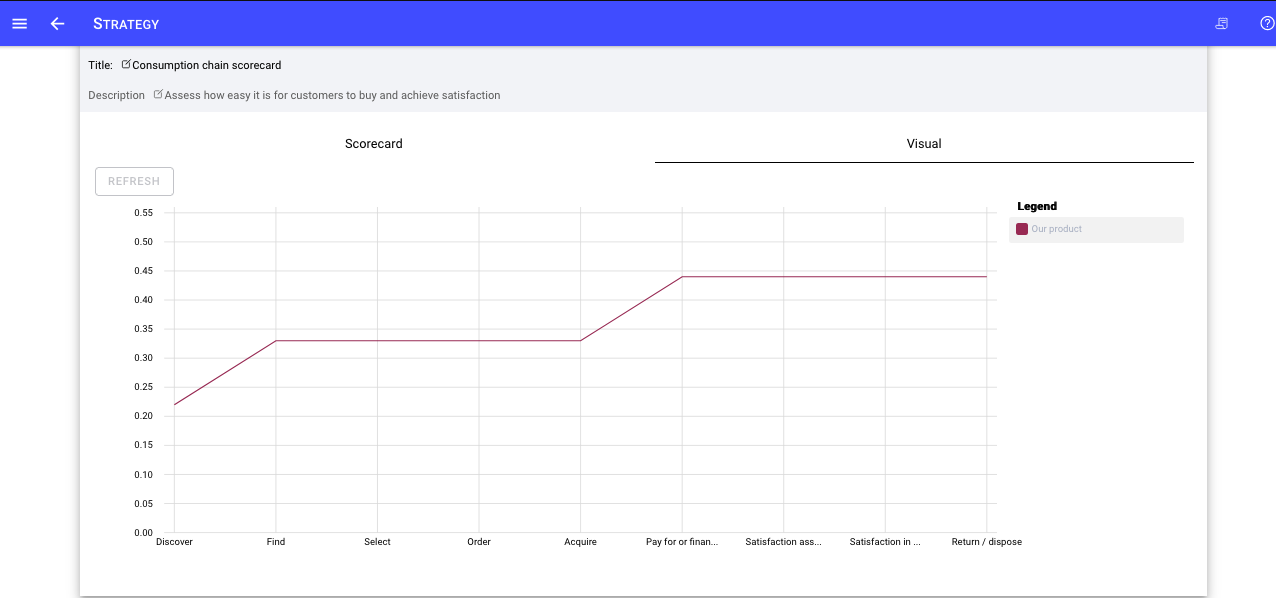Introduction
Great strategists understand that strategy is frequently far more about asking the right questions than it is about delivering absolute right answers. There are rarely singular “right” answers. There are often many pathways forward in any situation and it is almost impossible to know for sure which pathway is going to be best. Hence, Strategy is frequently, a theory or set of theories rather than absolutes. Strategy is a continuous process of asking questions and making or refining speculations, then use these hypothesis, to take action to test, validate and realize opportunities to meet needs and win with customers.
Example
Useful strategy frameworks and tools encourage strategists to ask good questions in anticipation that asking those questions will lead to strategic insights. For example, Michael Porters five forces industry analysis provides a framework to explore how different competitive forces shape industry profits.
But, this framework is really a series of nested questions. At the highest level Porter compels us to ask: What are the industry forces that affect the overall profitability of an industry? The framework tells us that these five forces are:
Rivalry, increased rivalry results in discounting and puts downward pressure on profits.
Threat of new entrants, the easier it is for new entrants to enter a market the more downward pressure can be expected on profits.
Buyer power, the more powerful buyers are the more they can negotiate for lower prices putting downward pressure on prices and hence profits.
Supplier power, the more powerful suppliers are the more they can demand higher prices putting downward pressure on industry profits.
Availability of viable substitutes and attractive complements

But each factor then leads to its own series of questions about each of these forces. So, for Threat of new entrants, the strategic mindset might ask questions like:
Is the industry we are in becoming more or less attractive to new entrants? In the next 2-3 years will that change? If not, why not, and if so, why so?
Is technology or government policy providing new opportunities for new entrants to bypass traditional industry barriers?
What type of new capabilities and resources do these new entrants require?
Are there barriers that constrain or limit access to any of those resources? If so, what are they?
Regrettably, in the haste to define goals and get on with execution, many leaders fail to discover potentially differential insights from these types of questions.
StrategyCAD for Great Strategists
Great strategists invest in deeply understanding the right questions to ask in any business situation rather than developing the best answer. Great strategists are comfortable being experts of questions rather than experts of answers because they recognize how important these questions can be for the long term success of the business. To be a great strategist, consider unapologetically asking great questions and then looking for and refining viable rather than the one best answer. See discovery
The StrategyCAD™ is unique in that you will find a structured level of more and more detailed questions, which you can address as time and priorities arise.
Starting with the Strategic choices canvas
The StrategyCAD™ Strategic choices canvas starts of with all the Strategic choices or question from Aspirations through to Barriers to imitation. Your where to play choice is again a series of questions or choices including geography, relative price, customer needs, product and service types, rivals in the same market and Jobs to be done.
Each of those will again stimulate more questions and insights. For example, the Jobs To be done canvas will have another layer of questions about trigger conditions, functional, emotional and social motivations in the Jobs to be Done, to give you and your team more insights into customer needs and winning with customers.
Conclusion
Strategy is about making choices to position your business into an environment where it can succeed, with a supporting action plan. Preoccupation with mission, vision, goals and execution activities will not be as beneficial in the absence of those choices.
Great strategists are curious and constantly ask questions, purposed to generate strategic insights (ways to win in their market or new markets). StrategyCAD is unique in its ability to support you and your team with strategic thinking and execution.
Your mindset challenge
-
Have each leadership team define their Strategic Choices in a StrategyCAD™ - Strategic Choices Canvas©
Review strategic choices for mutual consistency within a canvas, and if the business is a distinct business unit within a bigger business, evaluate unit level choices for consistency with the overall business choices.
-
Each month and no less than quarterly review the strategic choices of each business to identify are the choices those that will enable the level of business success anticipated.
How are the business drivers and KPI's performing?
Are changes required? If so what changes?
-
Develop, enhance and sustain a set of strategic questions conversation topics relevant to the business (unit) that are reviewed by that business unit team, ideally monthly and no less than quarterly.
For some recommended questions to spark and sustain strategy curiosity - see the section from the Strategy management section of the Strategic Choices Canvas©
-
Record the outcomes of these reviews in your StrategyCAD™ Strategic Choices Canvas Journal or update your Internal state assessments and action plans within your Implementation Canvas - in response to these reviews (as necessary).
- Ensure your next review and those who need to participate is scheduled for at least the year ahead.
- Ensure those affected by the reviews are consulted and informed of any strategy changes made or in consideration.
- Take feedback and address or adapt strategy choices / actions in response to that feedback.
References
|
|
Asking the right questions, 2023, Brigham Young University |












